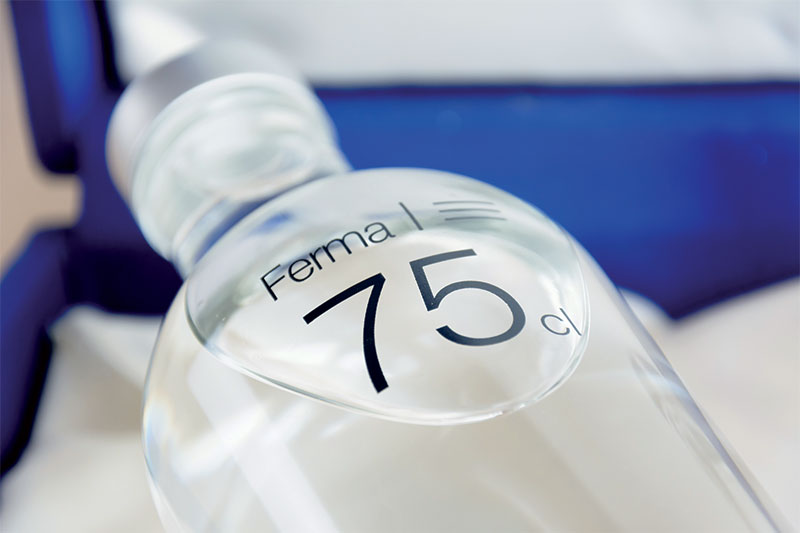Glass packaging – Data 2019

The 2019 of the sector: trends and markets of use, production trends and development prospects for primary packaging glass.
Barbara Iascone
Italian Packaging Institute
Hollow glass and glass tube packaging: this is the subdivision reported in Packaging in figures (annual publication by the Italian Packaging Institute) and to which we refer in this market analysis. Bottles, jars and vials fall into the first category, vials and flacons into the second. Here, we will examine glass intended for the primary packaging of liquid, semi-liquid or powdery products.
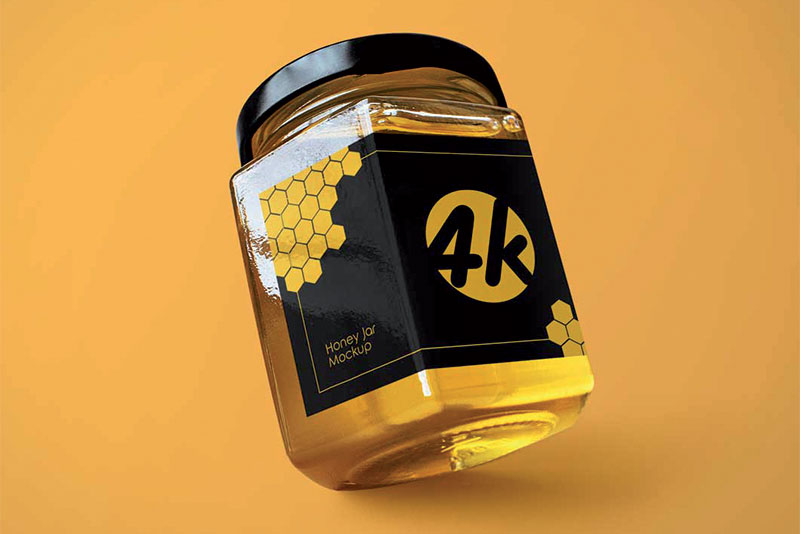
Trends and sector of use
The food (food & beverage), cosmetics and pharmaceutical sectors have always been the areas where the consumption of glass packaging reaches significant numbers.
Given that this is packaging strongly linked to the sectors of use, its trend has always been influenced by the trend of the products to be packaged.
Take for example wine, almost exclusively the prerogative of glass: in the event of more or less significant variations in the product balance, there may be significant differences in the production of bottles.
After years of losing position in the various packaging mixes, lately glass is experiencing an upsurge: this type of packaging (on the market for a long time compared to other packaging) has always been associated with elegance, transparency and sustainability, so much so as to be re-proposed as a useful alternative in the marketing and communication strategies adopted by some goods producers.
In this regard we cite Coca-Cola, which is re-evaluating the classic and beloved glass bottle. Testimonials in this sense also come from the wine sector, where even the less valuable brands are focused on the glass bottle at the expense of predominantly paper laminate packaging.
The same goes for milk, despite the continuous decline in consumption by Italian families, some glass bottles have now returned to the supermarket shelves.
| Year | Production | Exports | Imports | Apparent consumption |
|---|---|---|---|---|
| 2001 | 3,519 | 459 | 306 | 3,366 |
| 2002 | 3,540 | 433 | 356 | 3,463 |
| 2003 | 3,561 | 458 | 305 | 3,408 |
| 2004 | 3,602 | 476 | 378 | 3,504 |
| 2005 | 3,561 | 411 | 362 | 3,512 |
| 2006 | 3,568 | 419 | 367 | 3,516 |
| 2007 | 3,641 | 453 | 381 | 3,569 |
| 2008 | 3,695 | 450 | 433 | 3,678 |
| 2009 | 3,354 | 360 | 398 | 3,392 |
| 2010 | 3,528 | 405 | 544 | 3,667 |
| 2011 | 3,590 | 421 | 552 | 3,721 |
| 2012 | 3,414 | 412 | 571 | 3,573 |
| 2013 | 3,463 | 442 | 522 | 3,543 |
| 2014 | 3,719 | 440 | 614 | 3,893 |
| 2015 | 3,811 | 467 | 656 | 4,000 |
| 2016 | 3,937 | 445 | 704 | 4,196 |
| 2017 | 4,048 | 452 | 679 | 4,275 |
| 2018 | 4,167 | 482 | 793 | 4,478 |
| 2019 | 4,316 | 512 | 811 | 4,615 |
Source: Imballaggio in cifre, Istituto Italiano Imballaggio
Glass packaging remains the premium packaging for cosmetics, a symbol of elegance and high range, both for perfumes (where it has exclusive rights) and for creams.
Another element to highlight about the use of glass bottles is the trend of consumption in the Ho.Re.Ca. sector: increasingly widespread in restaurants or catering services, especially for mineral water, even fruit juices sold in bars are almost exclusively packaged in glass bottles.
Sales in the large-scale retail sector are different, where glass is in a minority compared to other competing materials, although at the moment it is not a rival material for the packaging of tomato purees.
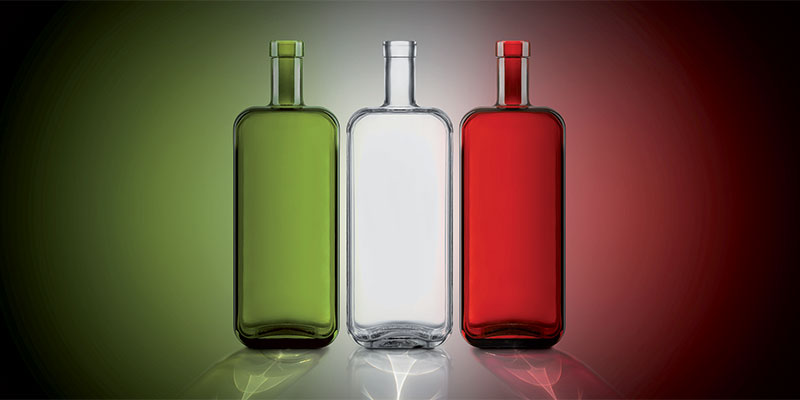
Production and trade balance
In 2019 the production of glass packaging expressed in tons settled at around 4,316 t/000 (+3.6% compared to the previous year).
The performance of all the components of the sector balance sheet was positive: exports grew at a rate of +6.8%, consumption stands at +3.1%, exceeding 4,600 t/000.
Imports grew by 2.8%, confirming a negative trade balance for Italy, which translates into an apparent consumption of glass packaging which is higher than domestic production that fails to meet domestic demand (the figure concerns both bottles and jars). Production expressed in terms of turnover grew by 6%.
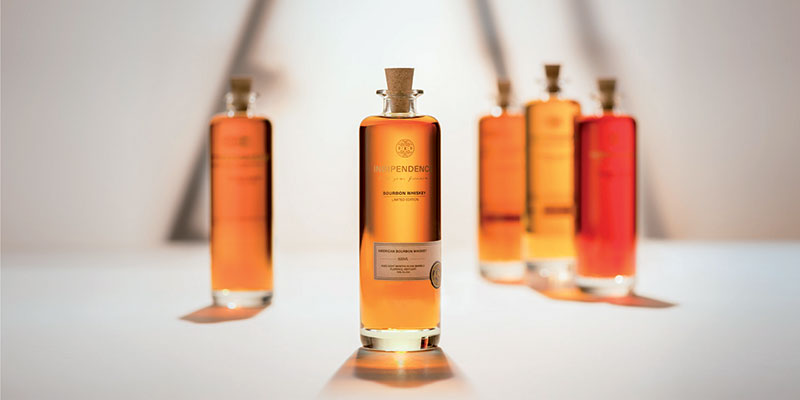
Types and percentages of use
The bottle production accounts for 89% of empty glass packaging and in 2019 showed a growth of 4.3%.
The trend in production is influenced by exports, which in 2018 grew by +10.2% compared to 2018, and the domestic market (+3.7%). Imports are growing, registering +3.8%.
Demand from the sectors of use undoubtedly influences the positive production trend, which in 2019 showed an excellent growth trend: production in fact stands at (+6%) , with different trends depending on the product examined.
Considering overall “alcoholic beverages” - which accounts for over 74% of glass bottle user sectors - growth in 2019 stood at +7.5%.
The non-alcoholic beverages area of the sector, including milk, grows of 1.7%; the remaining 13% is divided between condiments, sauces and tomato derivates which, as a whole, grew by around 2.4%.
In 2019, over 5,200 t/000 of glass bottles were used, of which 76% disposable, 24% returnable bottles.
40.2% of glass bottles (disposable + returnable) used in Italy were destined for wine and sparkling wines, 26.3% for mineral water.
13.7 % of the bottles were destined for beer, while the remaining 10.2% were divided into other beverages (alcoholic and non-alcoholic) 10.4%, and water and tomato derivates (purees) at 9.6%.
| Bottles (including returnables) | 2018 | 2019 |
|---|---|---|
| Alcoholic beverages | 72.70% | 73.80% |
| Non alcoholic beverages(1) | 14.10% | 13.50% |
| Condiments (2) | 7.00% | 6.70% |
| Tomato derivates(3) | 6.20% | 6.00% |
| Total | 100% | 100% |
| (1) Milk included | ||
| (2) Food oil and vinegar | ||
| (3) Tomato sauces and ketchup | ||
| Jars | 2018 | 2019 |
| Vegetable preserves and sauces | 61.50% | 62.10% |
| Yogurt | 0.80% | 0.80% |
| Babyfoods | 10.00% | 9.20% |
| Fish preserves | 5.40% | 5.70% |
| Other | 22.30% | 22.00% |
| Total | 100% | 100% |
| Hollow glass flacons | 2018 | 2019 |
| Cosmetics and perfumes | 59.50% | 60.00% |
| Pharmaceutical products | 32.60% | 32.00% |
| Other(1) | 7.90% | 8.00% |
| Total | 100% | 100% |
| (1) Chemical | ||
| Flacons and vials in tubular glass | 2018 | 2019 |
| Cosmetics and perfumery | 85% | 85% |
| Pharmaceutical | 14% | 14% |
| Other (1) | 1% | 1% |
| Total | 100% | 100% |
| (1) Chemical | ||
Source: Banca Dati Istituto Italiano Imballaggio
The production of glass jars in 2019 (7% of the total production of empty glass packaging) registered a slight drop of -0.4%.
The main area of use of the jars is that of food preserves (including fish products) with a share of 67.8%; the remaining 32.2% is divided into sauces, baby food, jams, yogurt and fresh desserts, spices and more.
In 2019 approximately 485 t/000 of glass jars were used in Italy, of which 27% were destined for the oil/vinegar sector and 16.1% for legumes. Other user sectors are: homogenized products (9.2%), various sauces, both tomato based and not (14.2%), fish products such as tuna, anchovies and sardines (5.7%). The remaining 27.8% of glass jars are divided into fruit in syrup, olives, corn, spices, jams, cream spreads, yogurt and more.
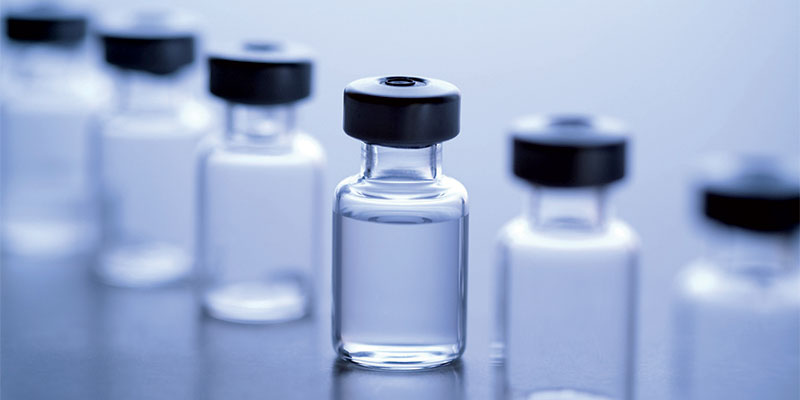
The production of hollow glass flacons also shows a significant drop (-5.1%), 60% of which used in cosmetics and 32% in the pharmaceutical sector; the remaining 8% is destined for other uses (chemicals, paints, glues, etc.).
This type of packaging accounts for 4% of the glass packaging total. Tubular glass products (flacons and vials) comprise the remaining 1% of glass packaging and are used for 85% in the pharmaceutical sector with the remaining 15% is divided between cosmetics and other uses.
The area registered a +1.3% in production, only driven by exports, which grew by 9%. Both imports (-4%) and the domestic market (-8%) were down.
Looking at glass packaging in its entirety, growth prospects remain strongly linked, as well as trends in the sectors of use, to the marketing and communication choices made by the big brands in favor of this type of packaging.
As with the entire manufacturing industry, the production and use of glass packaging is expected to decline in 2020. The bottle sector, in particular, will be strongly influenced by the negative trend of many user sectors linked to Ho.Re.Ca and exports due to the global lockdown.
